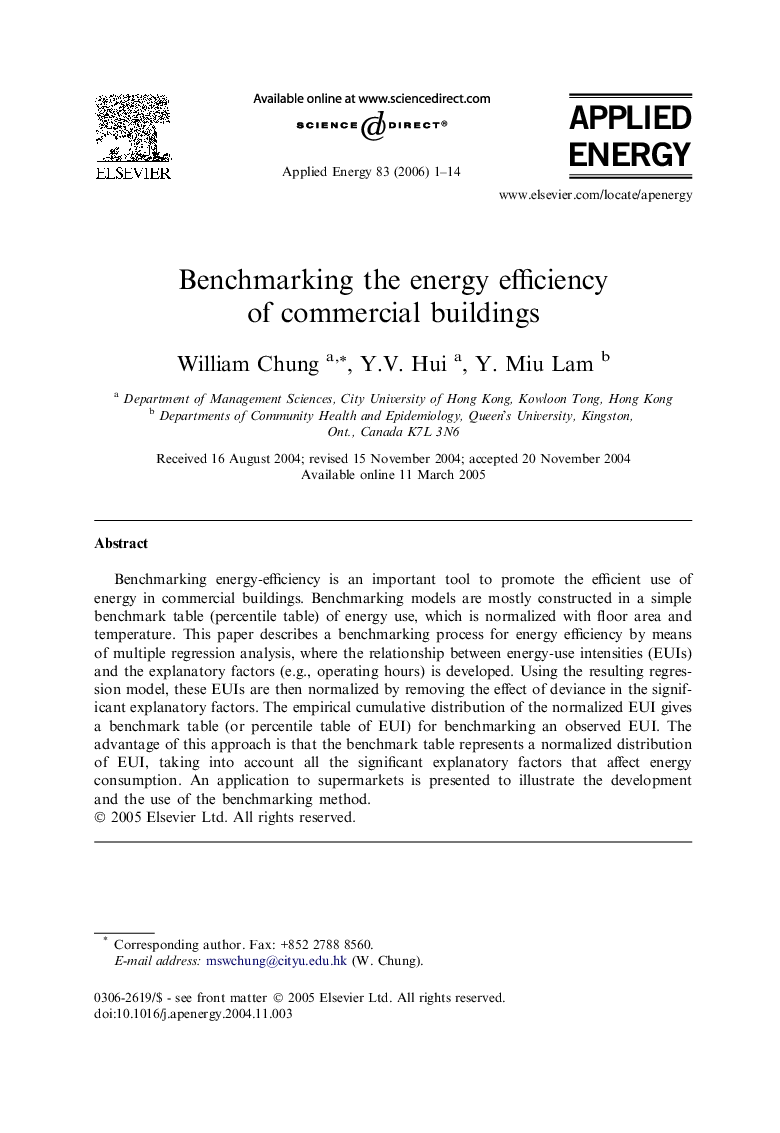| Article ID | Journal | Published Year | Pages | File Type |
|---|---|---|---|---|
| 245487 | Applied Energy | 2006 | 14 Pages |
Benchmarking energy-efficiency is an important tool to promote the efficient use of energy in commercial buildings. Benchmarking models are mostly constructed in a simple benchmark table (percentile table) of energy use, which is normalized with floor area and temperature. This paper describes a benchmarking process for energy efficiency by means of multiple regression analysis, where the relationship between energy-use intensities (EUIs) and the explanatory factors (e.g., operating hours) is developed. Using the resulting regression model, these EUIs are then normalized by removing the effect of deviance in the significant explanatory factors. The empirical cumulative distribution of the normalized EUI gives a benchmark table (or percentile table of EUI) for benchmarking an observed EUI. The advantage of this approach is that the benchmark table represents a normalized distribution of EUI, taking into account all the significant explanatory factors that affect energy consumption. An application to supermarkets is presented to illustrate the development and the use of the benchmarking method.
